Depicting Man or Beast? Can You Solve the Riddle of the Great Sphinx of Giza?
The Great Sphinx of Giza is one of the most fantastic monuments of ancient Egypt. A monolith carved into the limestone bedrock of the Giza plateau, the statue depicts a mythical creature with the head of a man and the body of a lion. According to legend, the Sphinx protects the tombs of the great pharaohs of Egypt and has done so ever since 2500 BC. However, in recent times, much debate has swirled around the origins and nature of this statue. Some say that erosion patterns actually indicate the Sphinx was built hundreds, if not thousands, of years earlier. Others suggest that the oddly disproportionate head suggest that originally, the statue was not of a sphinx at all, but rather of a lion or perhaps even the dog god, Anubis. As nobody may ever know the truth for certain, the Riddle of the Sphinx lives on.
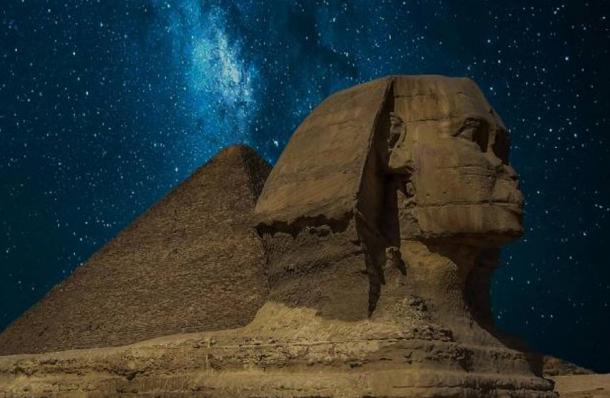
The Great Sphinx of Giza. Source: Public Domain
The Mythical Sphinx
A sphinx is a mythical figure in Greek and Egyptian mythology. It is typically portrayed as having the head of a man, the body of a lion, and the wings of an eagle. A sphinx can be male or female, but is always cunning and merciless. Usually, in myths, a sphinx asks riddles and if a person answers incorrect, he is eaten. Sometimes the sphinx terrorizes a village. For example, the sphinx of Boeotian Thebes “the most famous in legend, was said to have terrorized the people by demanding the answer to a riddle taught her by the Muses—What is it that has one voice and yet becomes four-footed and two-footed and three-footed? —and devouring a man each time the riddle was answered incorrectly. Eventually, Oedipus gave the proper answer: man, who crawls on all fours in infancy, walks on two feet when grown, and leans on a staff in old age. The sphinx thereupon killed herself.” (The Editors of the Encyclopedia Britannica, 2016)
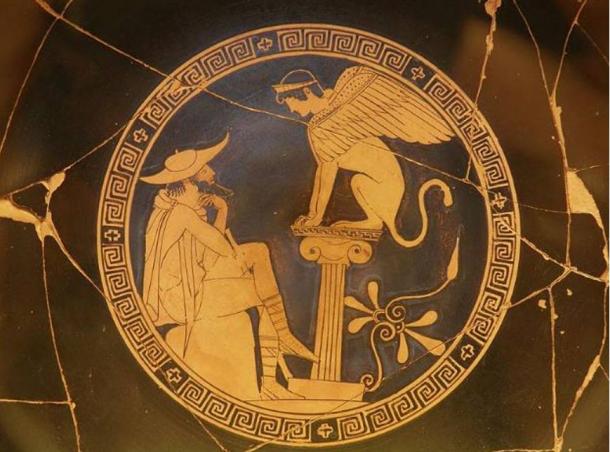
Oedipus and the Sphinx of Thebes, Red Figure Kylix, c. 470 BC, from Vulci, attributed to the Oedipus Painter, Vatican Museums. (Marcus Cyron/CC BY SA 2.0)
At other times, as in the Great Sphinx of Giza, the creature is said to be guarding something and will not let anyone pass unless they correctly answer a riddle.
Who Built the Sphinx of Giza?
Conventional wisdom holds that the Sphinx of Giza was built during the 4th Dynasty of the Old Kingdom of Egypt under the reign of Pharaoh Khafre (2558 – 2532 BC), around the same time that the Great Pyramids were being built. The statue’s face was supposed to be made in the Pharaoh’s image. Yet, one cannot help but be confused by the appearance of such a little head on top of such a gigantic body. “If we know anything about the ancient Egyptians and their statues, we know that they always got the proportions right. In fact, we could say that they were evidently obsessed with correct proportions in everything. So why would they carve what is still even today the world’s largest stone statue and get the proportions wrong?” (Temple, 2009)
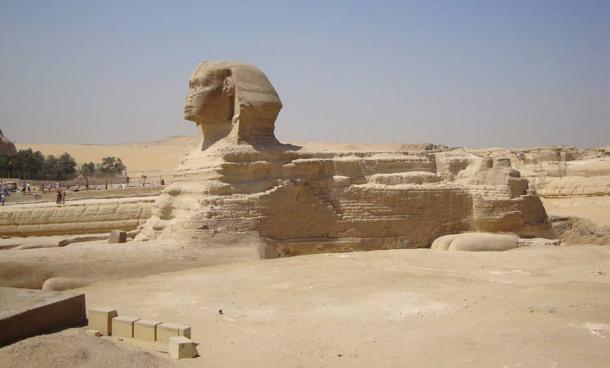
Giza Plateau – Great Sphinx – front view, note the proportions of the head to larger body. (Daniel Mayer/CC BY SA 3.0)
In addition, the face of the Sphinx does not look like other depictions of Khafre. “Known depictions of Khafre on statues and the Sphinx reveal many differences, though one might defend – though no one seems to have done so – that the sculptors got the precise features of Khafre slightly wrong, because of the uniqueness, the scale and challenge of working with the native rock at Gizeh, rather than with the much smaller scale and tested methodology of his known statues, some of which were recovered from the Valley Temple right next to the Sphinx.” (Coppens, 2016).
Some say that the Sphinx is more in the style of Pharaoh Khufu, Khafre’s father, and was therefore built sometime during his reign (2589 – 2566 B.C.). Others argue that it was built by Khufu’s other son, the little-known Pharaoh Djedefre (2528 – 2520 B.C.) in honor of Khufu, which explains why was in Khufu’s style and why it does not look like Khafre – it could have been made in Khufu’s likeness.
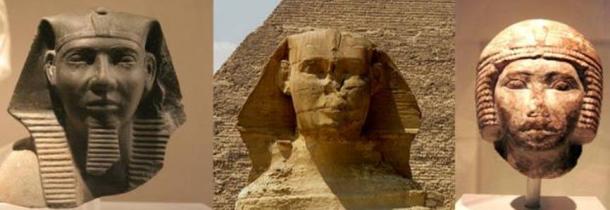
Left-right: Head of a statue of Pharaoh Khafre (Einsamer Schütze/CC BY SA 3.0), and head in ivory of Pharaoh Khufu exposed in Altes Museum (Marcus Cyron/CC BY SA 3.0). Do you see a resemblance between either pharaoh with the Sphinx?
The Sphinx as a Giant Lion
However, none of these theories explain the jarring disproportionate nature of the sphinx’s head. Historical architect Dr. Jonathan Foyle has said “the head and body were massively out of proportion…[and] the reason for this could be that the Sphinx originally had an entirely different head – that of a lion… To early Egyptians, the lion was a much more potent symbol of power than the human face” (Daily Mail Reporter, 2008). At this point in history, lions still inhabited Giza and the surrounding areas. Whether it was due to the erosion of the soft limestone or for political reasons, supporters of the lion-head theory argue that the Great Sphinx was remodeled to have the face of man, possibly of a pharaoh, an act that reduced the overall size of its head significantly.
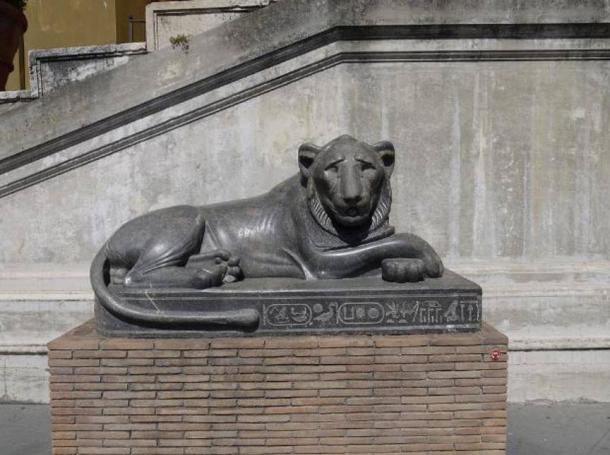
An Egyptian lion statue. (Yortw/CC BY 2.0)
The Egyptian God of the Dead
Yet another theory, somewhat less widely supported but far more interesting, holds that the Great Sphinx’s head was indeed originally that of an animal, but not of a lion. It was originally a dog and represented the Egyptian god of the dead, Anubis. As Robert Temple observes, “the body of the Sphinx is not feline, as lions are known for a back that is curved and possessing a mane that is absent on the Sphinx” rather, the body is in the shape of a crouching dog (Coppens, 2016). There is much circumstantial evidence to support this theory: First, Anubis is the god of the dead and is believed to protect the deceased and to prevent the unworthy from crossing the river Nile to the underworld, like the role played by the guard dog Cerberus in Greek mythology. In addition,
“following the Book of the Dead, a statue of Anubis was used in rituals to do with the deceased, and specifically the washing of the parts of the deceased body that had been placed in the four Canopic jars…[and] this might also explain why the Sphinx enclosure might have been a moat – filled with water – for ritual washing of the pharaoh’s body. Equally, seeing that Anubis was the god of embalming, one could argue whether the embalming of a or several pharaohs therefore occurred in the so-called Sphinx Temple.” (Coppens, 2016).
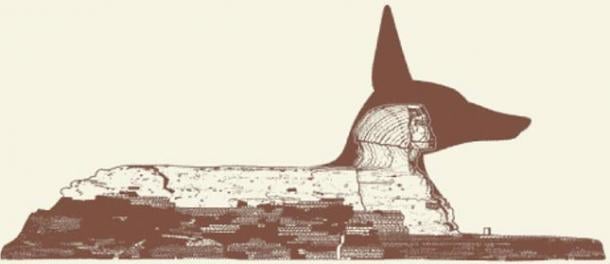
Was the sphinx initially designed as a statue of Anubis? (public domain)
Finally, “the best-known image of Anubis is the Anubis statue found inside the tomb of King Tutankhamen, which shows him as a crouching dog” (Temple, 2009). If the head of the statue was originally that of a pointy-eared jackal, as Anubis is often portrayed, then it supports the notion that erosion eventually ruined its ears and maybe its snout. The Pharaoh’s then sought to restore the statue and remodeled it to have a head of a man, transforming it into the popular mythical figure, the sphinx.
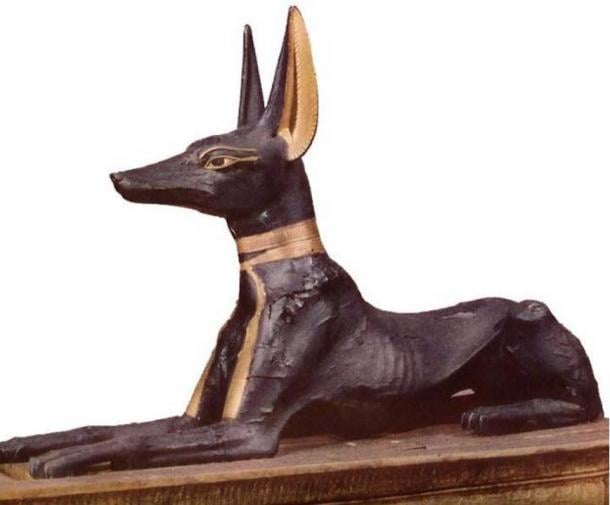
Representation of Anubis from the tomb of Tutankhamen. (CC BY SA 2.5)
Related Post
A shocking documentary proves that mermaids do exist
SHOCKING Revelation: Thuya, Mother of Queen Tiye, Was the Grandmother of Akhenaten and Tutankhamun—What Ancient Egyptian Secrets Did She Leave Behind?
Breaking News: Astonishing Discoveries at Karahan Tepe Confirm an Extraterrestrial Civilization is Hiding on Earth, and NO ONE Knows!
Breaking News: Researchers FINALLY Discover U.S. Navy Flight 19 After 75 Years Lost in the Bermuda Triangle!
NASA’s Secret Investigation: Uncovering the Astonishing Mystery of the UFO Crash on the Mountain!
Explosive UFO Docs LEAKED: Startling Proof That Aliens Ruled Ancient Egypt!